Grupo Serra da Lousã
Comareira (Góis)
It is the smallest village of the range being considered by some to be the most authentic. Its location means that it gets direct sunlight throughout the day.
At the entrance there is a viewpoint that offers a fantastic view over the beautiful natural landscape of the region.
Nearby points of interest: Comareira viewpoint, Góis Boulders, OITA Forest Park, Aigra Nova Village.
Aigra Nova (Góis)
Well-preserved village whose schist houses are grouped around the three streets that make up the village. It houses the Ecomuseu Tradições do Xisto (Eco museum of The Schist Traditions) which, through various centres, exhibits the traditions and hard life of the hill people to the visitor.
There is also a tree nursery whose purpose is to grow some species of native trees that will later be planted in the hills helping with their reforestation.
Nearby points of interest: Eco museum of the Schist Traditions Headquarters, Tree nursery, Peneda / Pego Escuro River Beach, Canaveias River Beach, Comareira village, Aigra Velha village.
Aigra Velha (Góis)
It is close to the top of the hill at a height of 770 meters, which gives it the title of the village at a higher altitude within the range. From one side you can see the Serra da Estrela and from the other side the majestic Penedos de Góis (Boulders of Góis).
Once a region with a strong presence of wolves, it led the residents to build houses facing each other, in some cases even connecting the facing house with a closed passage that connected the two houses from the inside and cut off the main street.
Nearby points of interest: Wood oven Centre and Alembic Still of the Claro family, Boulders of Góis, OITA Forest Park, Peneda / Pego Escuro River Beach, Canaveias River Beach, Aigra Nova Village, Pena village.
Pena (Góis)
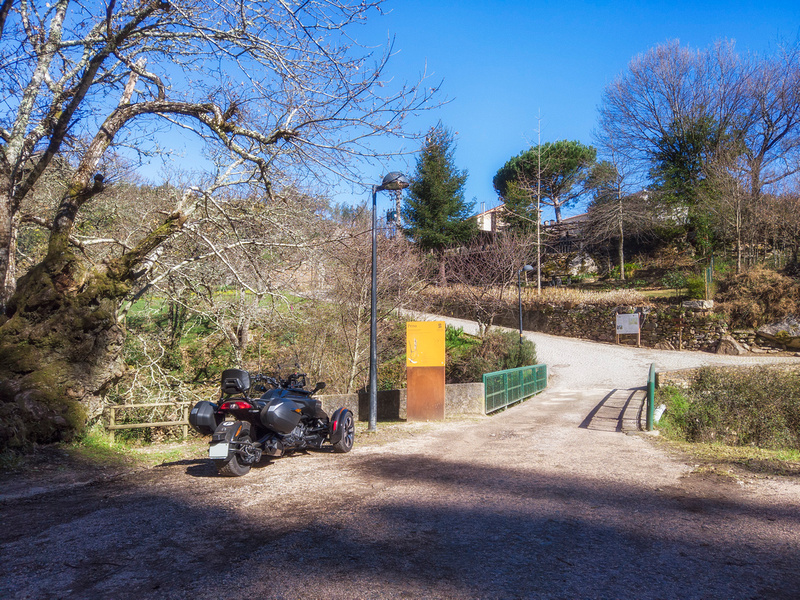
In the shade of the colossal Góis Boulders and on the left bank of the stream which bears the same name is the village of Pena.
It is probably the largest of the group of villages in Lousã. Here the buildings combine schist with quartzite and are perched on a rocky slope seeming to defy gravity.
At the entrance to the village (made by a bridge over the river) is a secular chestnut tree.
Nearby points of interest: Secular chestnut tree, Alembic, Water mill, Levada (water channel), Góis Boulders, Ribeira de Pena, Aigra Velha village.
Candal (Lousã)
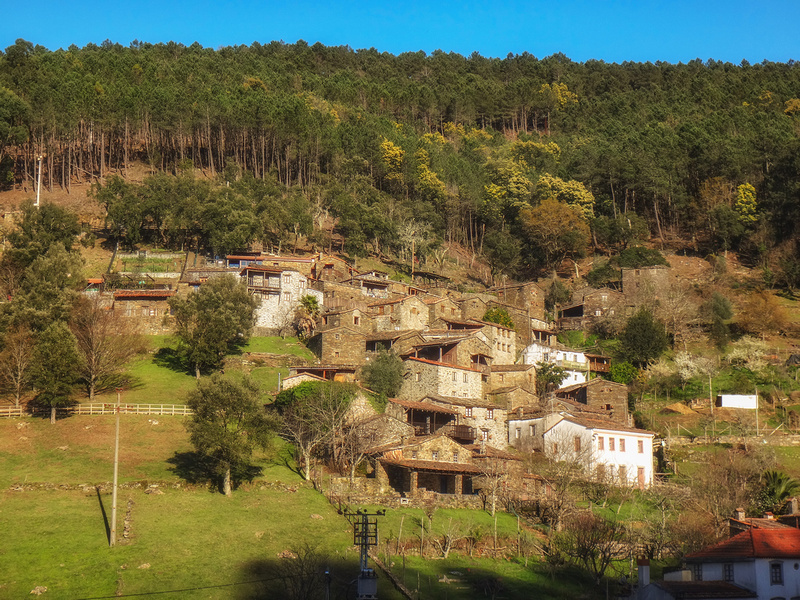
Despite being in the middle of Serra da Lousã it benefits from the proximity to a primary road thus being less isolated and is therefore considered one of the most developed hill villages in the region.
Nearby points of interest: Schist Villages Shop, Fountain, Candal Viewpoint, Water Mills (private), Mill (private), Candal Stream, Cerdeira Village.
Cerdeira (Lousã)
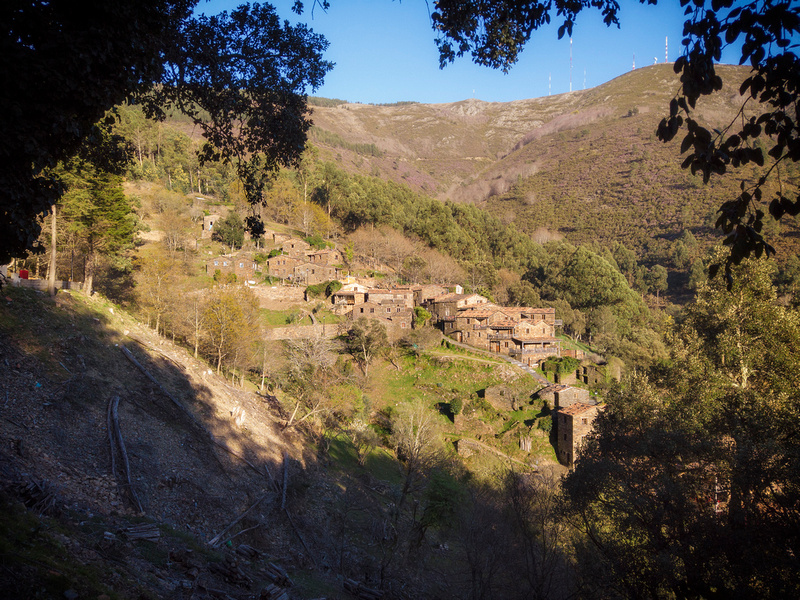
It is the smallest of the group of villages in the municipality of Lousã and it is located along the bank of the Cerdeira Stream. The houses are arranged along a single street that ends at the riverside.
The predominant building material is schist and the houses are not plastered making this village one of the most photogenic and interesting.
Nearby points of interest: Casa das Alminhas (house with a Wayside Shrine), House of Arts and Crafts, Chapel of Our Lady of Fátima, Cerdeira Stream, Candal.
Talasnal (Lousã)
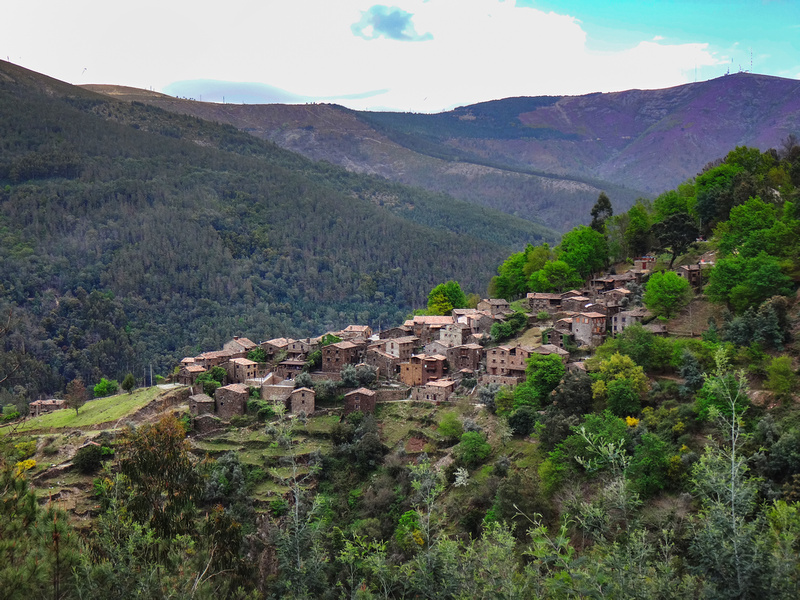
This small village about 12km from the village of Lousã is one of the most charismatic and a true tourist postcard of Aldeias do Xisto.
In 1981 it was almost extinct having only two residents. Nowadays there are probably no permanent residents as the derelict houses have all been rehabilitated to be second homes and for ecotourism. It is the most popular and the most visited village in the Serra. In the " Taberna " (where the old tavern existed) at the entrance of the village, you can taste the renowned local pastry named "Talasnico ***".
Nearby points of interest: Mill (private), Vergada Stream, Santuário de Nossa Senhora da Piedade (Sanctuary of Our Lady of Mercy), Nossa Senhora da Piedade (Our Lady of Mercy) River beach, Lousã (or Arouce) Castle, Casal Novo village.
Casal Novo (Lousã)
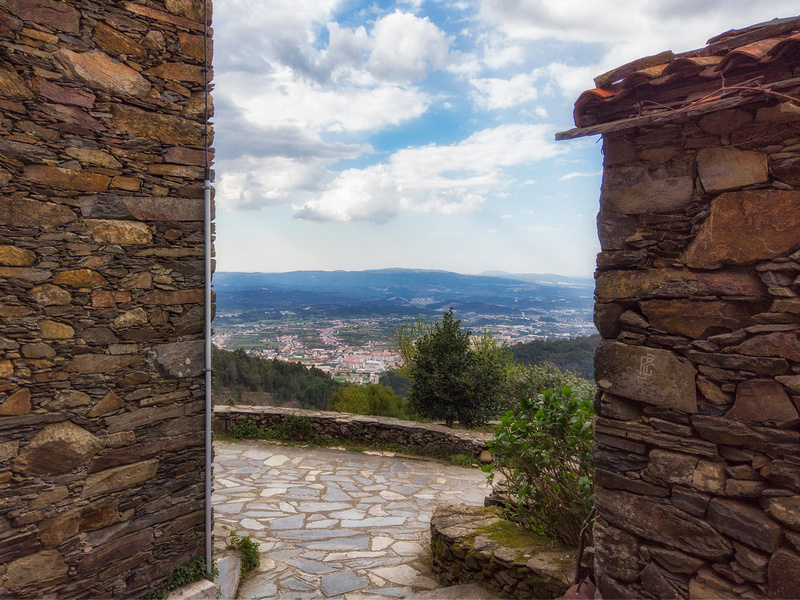
It is a few kilometres from the village of Lousã and is one of the smallest villages in the hills. It consists of a sloping street where the houses of the village are gathered. The street extends as a road (along 1.7 km) to the Sanctuary of Our Lady of Mercy. From the viewpoint of the Eira (threshing floor) you can see the village and Arouce (or Lousã) Castle.
It is said that many years ago when the last inhabitant was preparing to leave, tired of fighting for the road and light to come to the village, the workers arrived to install the electricity.
Nearby points of interest: Village stone water tank, Eira viewpoint, Sanctuary of Our Lady of Mercy, Our Lady of Mercy river beach, Lousã (or Arouce) Castle, Talasnal village, Chiqueiro village.
Chiqueiro (Lousã)
One of the smallest villages in the hills it nests in the hills surrounded by dense vegetation. The houses are mostly in dark schist.
In the 1940s it had 45 residents but since 1991 it has only had two, a couple which insists on not leaving their herds of goats.
It is the starting point for several hiking routes through the Serra.
Nearby points of interest: Chapel of Senhora da Guia, Casal Novo village.
Casal São Simão (Figueiró dos Vinhos)
It consists of a street where the houses, mostly built in quartzite, are gathered. Nearby are the Fragas de São Simão (Saint Simon Crags), a rocky stretch of 70 meters through which the Alge stream flows.
The village was restored preserving the original design and materials having nowadays some permanent residents.
Nearby points of interest: Loja das Aldeias do Xisto (Schist Villages Shop), Alge Stream, Saint Simon Crags River Beach, Saint Simon Crags Viewpoint.
Ferraria de São João (Penela)
The most westerly and unique village in the municipality of Penela is clustered on a hillside overlooking the valley. It has one of the most numerous sets of communal pens that served a community herd with more than a thousand heads.
Next to the village is a century-old cork oak that in 2017 helped to stop the spread of the flames during the forest wildfires. Subsequently and within a radius of 100 meters the residents replaced the existing eucalyptus with cork oaks, oaks and other trees, thus creating a protection area around the village.
Nearby points of interest: Capela de São João (Chapel of Saint John), Pens, Eira, Centuries-old Oak forest.
Gondramaz (Miranda do Corvo)
It is located 9km from Miranda do Corvo on the western slope of the hill with natural surroundings of rare beauty. Here schist is king and it is present even on the pavement of the village's narrow streets.
At the entrance to the village there is a poem by Miguel Torga. The poet and writer was a visitor to the village as a doctor, having portrayed the isolation and harshness of life in the hill in Gondramaz at that time (1935).
It should be noted that during its requalification this village hosted the project "Caminho do Xisto Acessivel" (Schist Route Accessibility) where (sensory) pavement techniques, signage and equipment for people with disabilities were applied in terms of mobility.
Nearby points of interest: Capela da Nossa Senhora da Conceição (Chapel of Our Lady of Conception), Lavadouro (Village stone wash-house), Fountain, Ribeira Cascade, Penedo dos Corvos (Crows Boulder), Segade River Beach
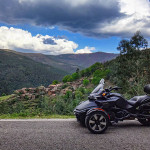





Leave a message